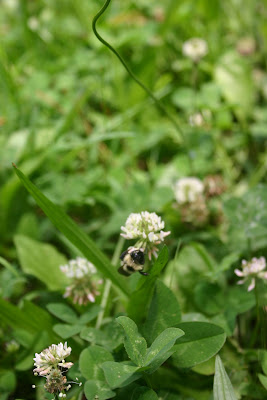
Scientific Name: Trifolium repens
Common Name: white clover
Range: throughout United States, except Great Plains and extreme South; found in lawns, fields, roadsides, and disturbed habitats
Range: throughout United States, except Great Plains and extreme South; found in lawns, fields, roadsides, and disturbed habitats
Origin: native to Eastern Mediterranean and Asia
Botanical description: White clover is a perennial plant with alternate compound leaves found in threes. The dark green leaves often have a white “V” or crescent in their center.
The flowers are white, sometimes tinged with pink, and are actually dense groups of individual red clover by this close to the ground growth pattern and, of course, the white flowers when flowerettes arranged in a round head. The plant grows close to the ground and is notorious for its ability to creep, or spread, by the use of stolons. White clover is most easily distinguished from blooming. Red clover plants often have larger leaves than those of white clover.
What’s in a name: Like red clover, white clover’s genus name, Trifolium, means “three leaves”, and its species name, repens, means “to creep”.
All in the family: White clover is a member of the Leguminosae family, which includes red clover and other plants such as peas, beans and peanuts that are nitrogen fixers (see description in red clover information sheet).
Cultural uses: White clover blossoms were used in folk medicine against gout, rheumatism, and leucorrhea. It was also believed that the texture of fingernails and toenails would improve after drinking clover blossom tea. Native Americans used whole clover plants in salads, and made a white clover leaf tea for coughs and colds. White clover is thought to clean the system, decreasing irritation and muscular activity of the gastrointestinal tract. It is also used to decrease the activity of the central nervous system. Like red clover, it was thought to give anyone who carried its leaves the ability to detect witches, sorcerers and good fairies in his presence. It also was seen as representing the Trinity by Christians.
Active compounds: The active compounds of the white clover are unknown.
Research: none found







No comments:
Post a Comment